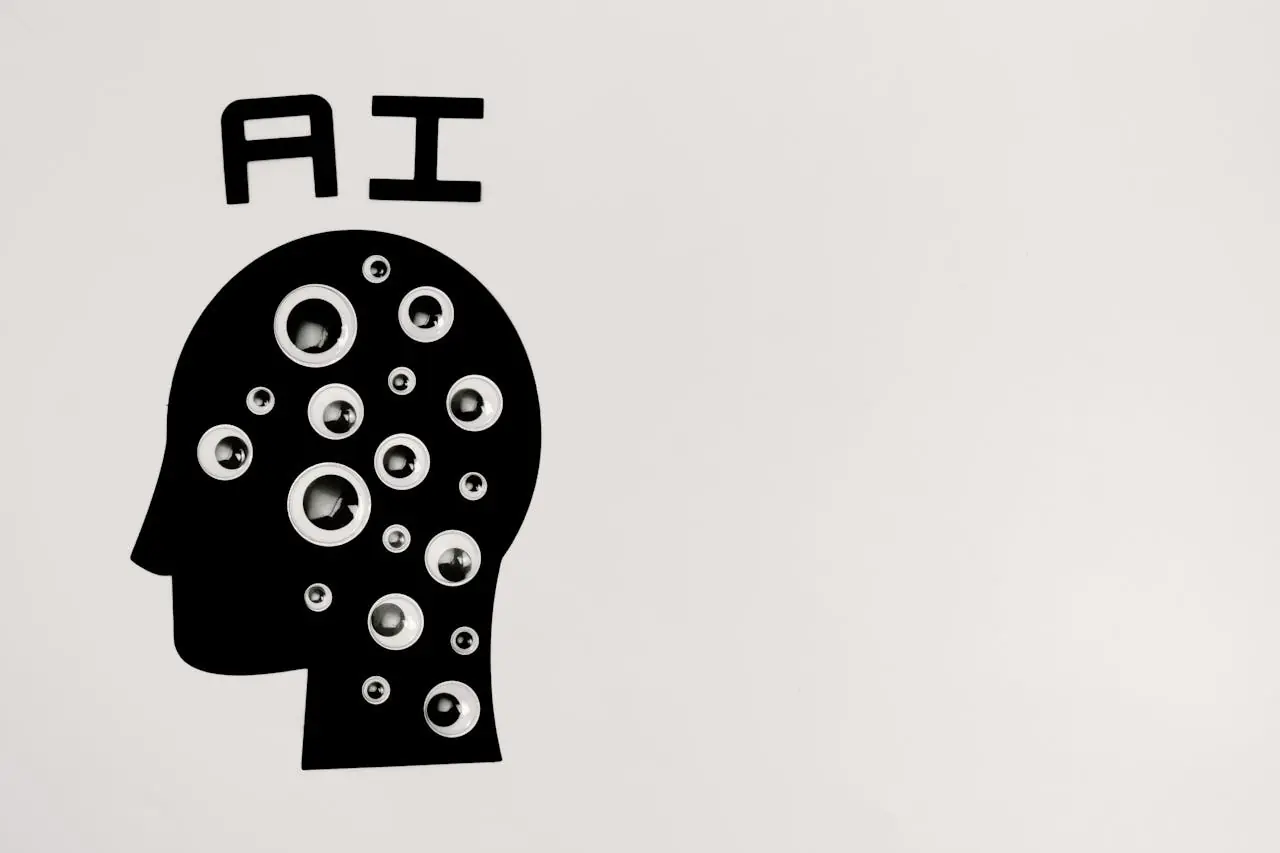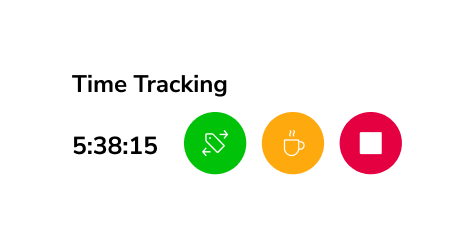How Is AI Used in Everyday Life?
Artificial Intelligence is everywhere. It’s become a bit of a buzzword thanks to innovative AI tools like ChatGPT, Gemini, and Midjourney.
But beyond the hype, AI is quietly changing how we live, work, and interact every day. From the way we communicate and shop to how we stay healthy and manage our time, AI is reshaping our habits in unique and surprising ways.
There’s really no avoiding it, so the smart thing to do is to try to understand what it is, how it works, how it can affect our lives, and the ways we can use it to our advantage. That’s exactly what we’ll do in this article.
There’s a lot to be excited about in the age of AI, so let’s get into it!

Photo by Levart_Photographer on Unsplash
What Is Artificial Intelligence?
Artificial intelligence, or AI, is technology that allows computers and machines to perform tasks that usually require human thinking. This includes learning new information, understanding language, solving problems, making decisions, and even being creative.
AI essentially works by analyzing large amounts of data, recognizing patterns, and using that knowledge to make predictions or take action.
This may be a bit of an oversimplification but here’s a helpful way to understand the core idea: AI learns from data in much the same way humans learn from experience. And it does this at an impressive speed.
How Has AI Affected Our Daily Lives?
“AI has the potential to be more transformative than electricity or fire.” – Sundar Pichai, CEO of Google
Sundar Pichai could not have said it better. The impact of AI in daily life is massive even though most people don’t see it now.
When I said earlier that AI is everywhere, I mean it. AI can take on the form of software, such as chatbots, recommendation engines, and virtual assistants. It can also be in physical machines, like self-driving cars, robots, and smart home devices.
To better see the impact of how AI is used in everyday life, let’s have a look at some more examples below.
Examples of AI in Everyday Life
1. Digital Assistants
If you’ve ever asked Siri or Alexa to do something for you, like set a timer, send a message, or control your smart lights, you’ve actually interacted with artificial intelligence. These digital assistants use advanced AI to recognize your voice, understand the meaning behind your words, and respond instantly with the right action or information.
Behind the scenes, AI is constantly learning from your interactions, improving its accuracy, and even predicting your needs over time. This is why Siri might suggest leaving early for a meeting if there’s traffic, or Alexa might recommend a playlist you’ll enjoy based on your listening habits.

Photo by appshunter.io on Unsplash
2. Search Engines
Think Google, Yahoo, Bing. All these search engines use algorithms to help you find what it is exactly you’re looking for on the internet.
With the help of AI, those search engine results are now more accurate, relevant, and tailored to your needs than ever before.
AI in search engines goes beyond just matching keywords, it can actually understand natural language, predict your intent, and refine results in real time. This means even if your search is incomplete or a bit vague, AI can still figure out what you meant and deliver precise answers.
Another major leap in the use of AI in search engines is Google’s AI Overview. You might have noticed this in your recent searches. You simply type in your query, and instead of sifting through multiple links, you get an instant, AI-generated summary of the most important information.
These AI generated summaries are becoming more common. According to a report from the Pew Research Center about the browsing activity of US adults, in March 2025, about 1 in 5 Google searches, roughly 18%, included an AI-generated summary.
3. Chatbots
Chatbots are another common example of AI you’ve probably come across on the daily.
ChatGPT in itself is a chatbot powered by a large language model (LLM) and generative artificial intelligence (AI).
Whether you’re asking about a store’s opening hours or getting help with a product, instead of waiting on hold or searching through FAQs, you can type your question into a chat window, and AI will respond instantly.
These bots use natural language processing (NLP) to understand your questions and give relevant answers. Unlike older automated systems that only worked with simple “yes” or “no” inputs, modern AI chatbots can handle complex, detailed queries in a conversational way, almost like chatting with a real person.
Chatbots are definitely helpful in answering quick questions and processing simple requests. Personally though, I don’t think they’re anywhere near replacing human interaction completely, at least not yet!
4. Online Shopping
According to the Adobe Digital Insights Quarterly Report released in June 2025, AI use in online shopping is expected to grow by at least 35%. By the end of 2025, more than half of shoppers (53%) think they’ll be using AI assistants to help them shop.
The role of AI in online shopping lies mainly in personalizing the shopping experience.
When you’re browsing products online, AI is often working in the background to recommend items based on what you’ve previously searched for, clicked on, or bought. This helps shoppers discover products they’re more likely to be interested in. And that’s not only great for shoppers but also for businesses!
AI also helps businesses adjust prices based on things like demand or shopping trends, making sure prices stay competitive.
Another common use of AI is in customer service. Many websites use AI-powered chatbots to answer questions instantly, whether it’s about tracking an order or learning more about a product. Even the estimated delivery date you see at checkout is often calculated using AI, which can predict delays based on your location, weather, and shipping history.
5. Enhanced Workplace Monitoring
Remote work has stuck around even long after the pandemic. As such, the need for better tools to manage and monitor employee performance has grown.
Companies are increasingly turning to AI-powered employee monitoring systems to track productivity, ensure accountability, and manage remote teams more effectively.
There are now time tracking software that can automate how you track work hours. With the help of AI, these tools go beyond just mere time tracking. They can monitor productivity by analyzing keyboard activity, mouse movements, and even time tracking with screenshots to give managers a clearer picture of how time is being spent.
Productivity tools can also come equipped with AI-powered facial recognition and GPS tracking to verify employee identity and location during working hours. This is especially useful for companies with mobile or hybrid teams, ensuring that staff are working from approved locations and at designated times.

Photo by Tara Winstead from Pexels.com
Advantages and Disadvantages of AI in our Daily Lives
“AI will be an integral part of solving the world’s biggest problems, but it must be developed in a way that reflects human values.” – Satya Nadella, CEO of Microsoft
As with anything, there are advantages and disadvantages to using AI. Understanding these pros and cons can help us use AI more wisely and responsibly.
Advantages of AI in our Daily Lives
- Saves Time and Effort
AI helps us get things done faster. This has to be the biggest advantage of using AI. You get to automate so many repetitive tasks, make everyday processes more efficient, and reduce the need for manual work.
For example, instead of sorting through hundreds of emails, AI can automatically filter and organize your inbox. Virtual assistants like Siri, Alexa, or Google Assistant can schedule appointments, set reminders, or answer questions instantly, saving you a ton of time and effort.
- Personalized Experience
AI learns what we like. It doesn’t just guess, it analyzes our behavior, preferences, and past choices to offer suggestions that fit us better. You can see this in site algorithms that recommend products, movies, or music tailored just for you. This kind of personalization not only improves your experience as a customer but is also a big advantage for businesses.
By understanding what customers prefer, businesses can show the right products to the right people, increasing the chances of making a sale.
- Full-Time Availability
Another major advantage of using AI is its ability to work non-stop. Unlike humans, who need breaks, rest, and time off, AI systems are available 24/7. This means they can operate around the clock without losing efficiency or focus.
Whether it’s a customer support chatbot answering questions at midnight or a system managing inventory and processing data during off-hours, AI ensures that work continues without interruption.
Disadvantages of AI in our Daily Lives
- Dependency
As AI becomes more common in our daily routines, it’s easy for people to become too dependent on it. Over time, this can lead to a loss of basic skills, such as remembering information, thinking critically, or completing tasks manually.
A new study from researchers at MIT’s Media Lab on ChatGPT’s impact on your brain revealed that ChatGPT users had the lowest brain engagement and underperformed at neural, linguistic, and behavioral levels.
Although more research is needed in this area to further validate the long term effects of using such AI tools, it’s already concerning the initial impact it’s having on users.
- Privacy Issues
AI learns from the data we feed it. This raises the concern of how that data is collected, stored, and used. In everyday life, AI systems often require access to personal information, such as your location, search history, voice recordings, or even facial features, to function properly and deliver personalized experiences.
While this makes technology more helpful and efficient, it also creates risks. Without strong privacy protections, sensitive data can be misused, shared without permission, or fall into the wrong hands through data breaches.
- Lack of a Human Touch
AI is great and all, but it’s nowhere near replicating how humans respond, empathize, and understand context and tone. While AI can process language, answer questions, or even simulate conversation, it still lacks true emotional intelligence.
It can’t feel empathy, understand subtle social cues, or react with genuine compassion in difficult or sensitive situations. AI may never have that truly human touch, but it’s impressive to see how it’s getting closer.
Final Thoughts
“AI is going to reshape every industry and every job.” – Reid Hoffman, Co-founder of LinkedIn
AI is undoubtedly a powerful technology that can improve our lives in many ways, from making daily tasks easier to helping solve complex global challenges. But it’s not perfect. It comes with risks that need careful attention, especially around privacy, ethics, and the need for human connection.
As we continue to build and use AI in daily life, it’s important to make sure it serves people in a way that reflects our values and respects our rights. We should use AI in a way that enhances, not replaces, what makes us human.
Related Articles:
How AI-Powered Software is Transforming Workspaces
How AI is Transforming Time Tracking


